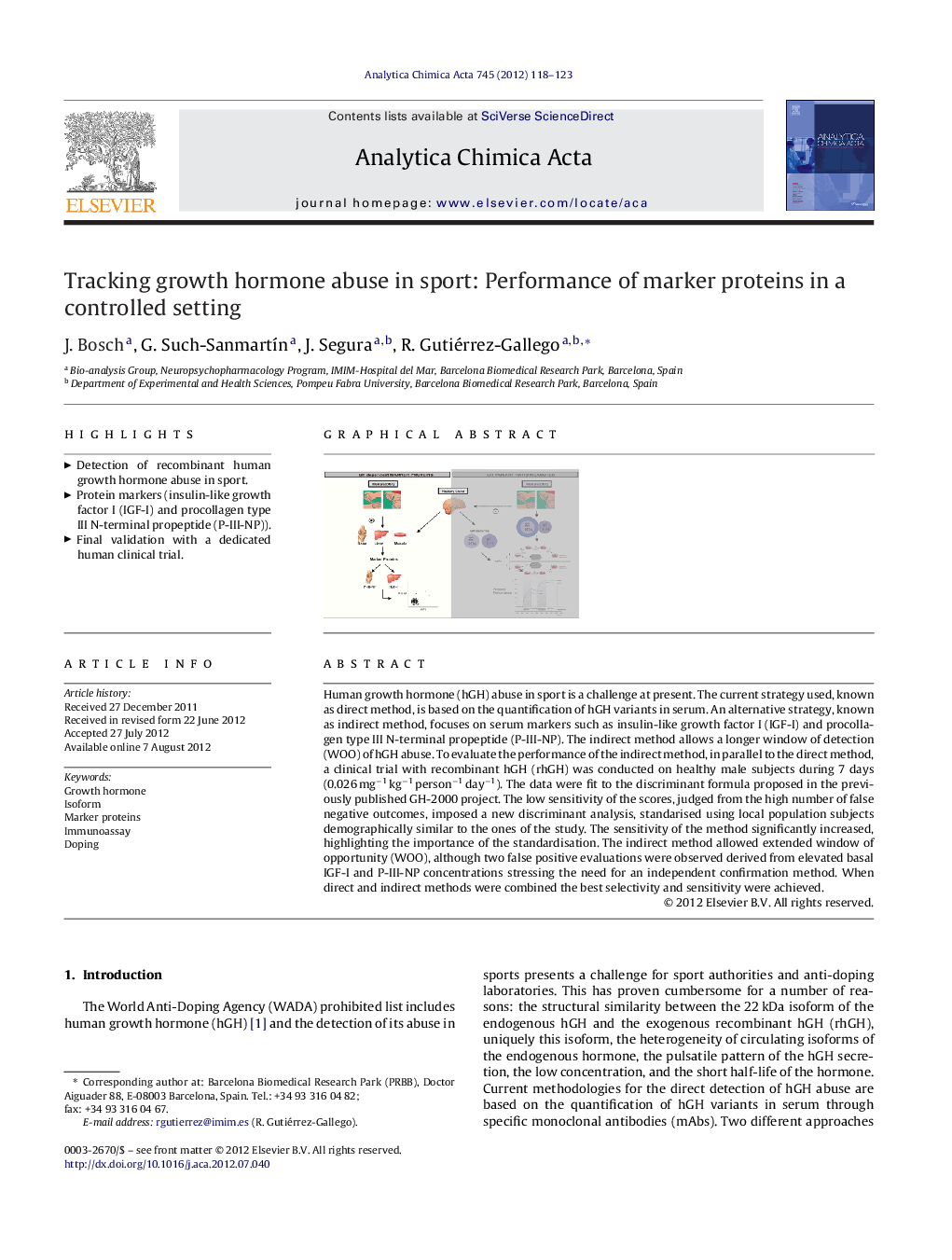| Article ID | Journal | Published Year | Pages | File Type |
|---|---|---|---|---|
| 1165710 | Analytica Chimica Acta | 2012 | 6 Pages |
Human growth hormone (hGH) abuse in sport is a challenge at present. The current strategy used, known as direct method, is based on the quantification of hGH variants in serum. An alternative strategy, known as indirect method, focuses on serum markers such as insulin-like growth factor I (IGF-I) and procollagen type III N-terminal propeptide (P-III-NP). The indirect method allows a longer window of detection (WOO) of hGH abuse. To evaluate the performance of the indirect method, in parallel to the direct method, a clinical trial with recombinant hGH (rhGH) was conducted on healthy male subjects during 7 days (0.026 mg−1 kg−1 person−1 day−1). The data were fit to the discriminant formula proposed in the previously published GH-2000 project. The low sensitivity of the scores, judged from the high number of false negative outcomes, imposed a new discriminant analysis, standarised using local population subjects demographically similar to the ones of the study. The sensitivity of the method significantly increased, highlighting the importance of the standardisation. The indirect method allowed extended window of opportunity (WOO), although two false positive evaluations were observed derived from elevated basal IGF-I and P-III-NP concentrations stressing the need for an independent confirmation method. When direct and indirect methods were combined the best selectivity and sensitivity were achieved.
Graphical abstractFigure optionsDownload full-size imageDownload as PowerPoint slideHighlights► Detection of recombinant human growth hormone abuse in sport. ► Protein markers (insulin-like growth factor I (IGF-I) and procollagen type III N-terminal propeptide (P-III-NP)). ► Final validation with a dedicated human clinical trial.
